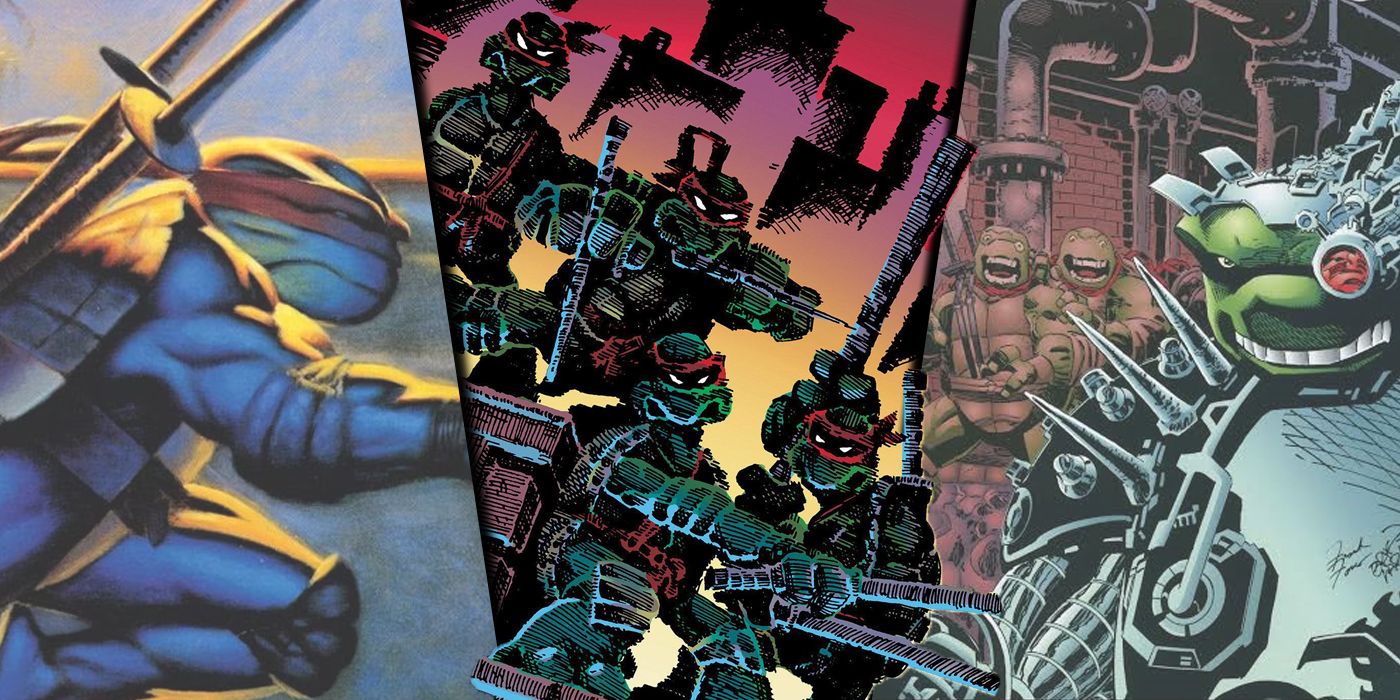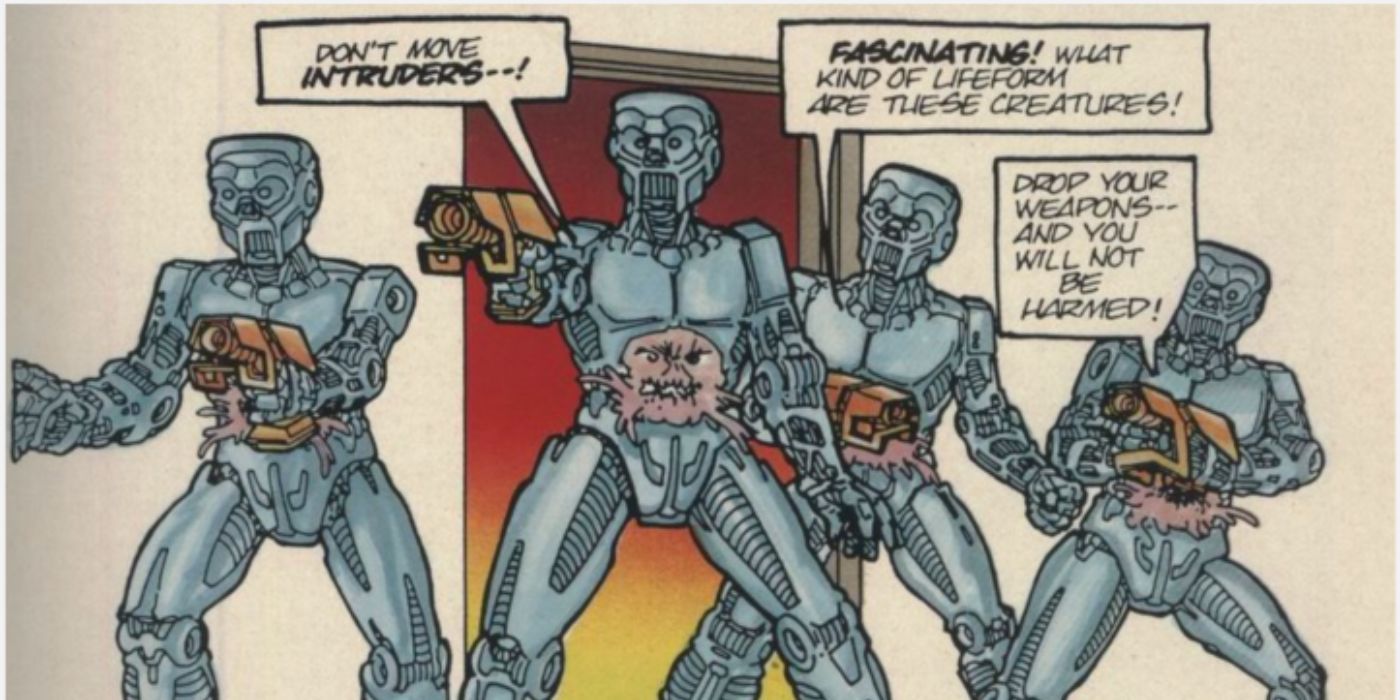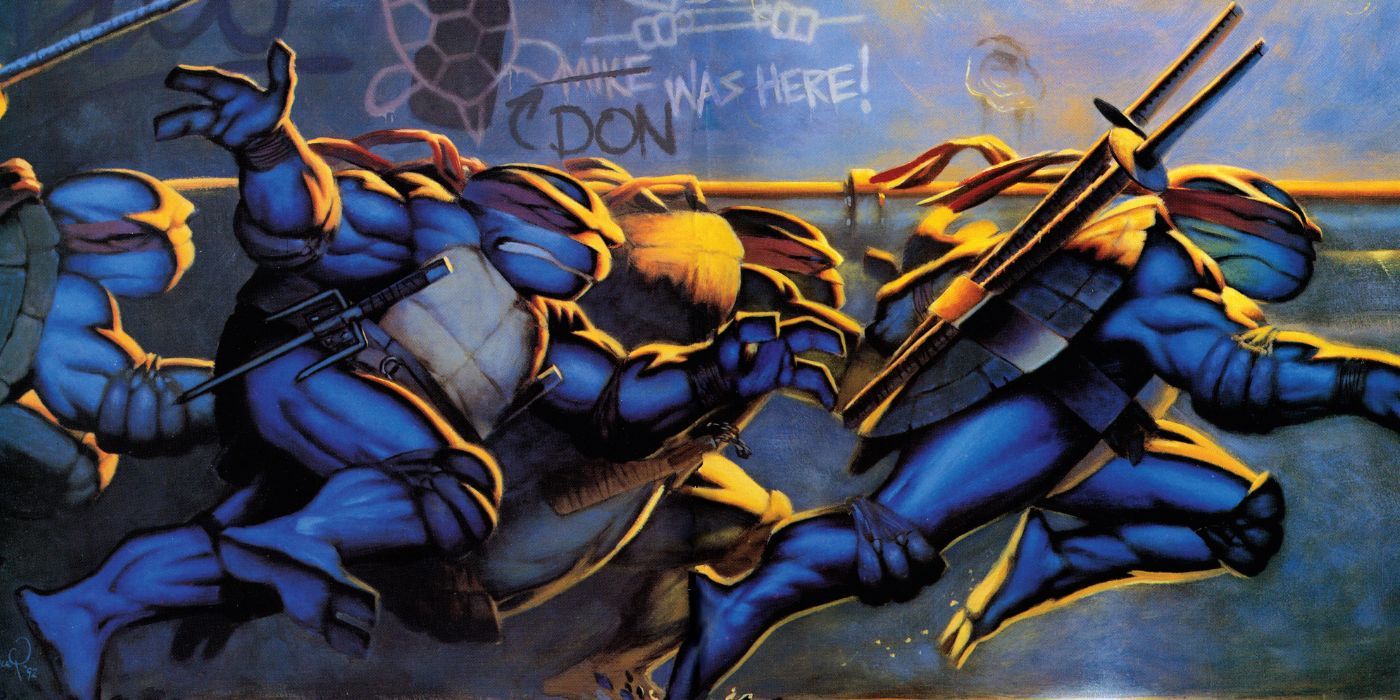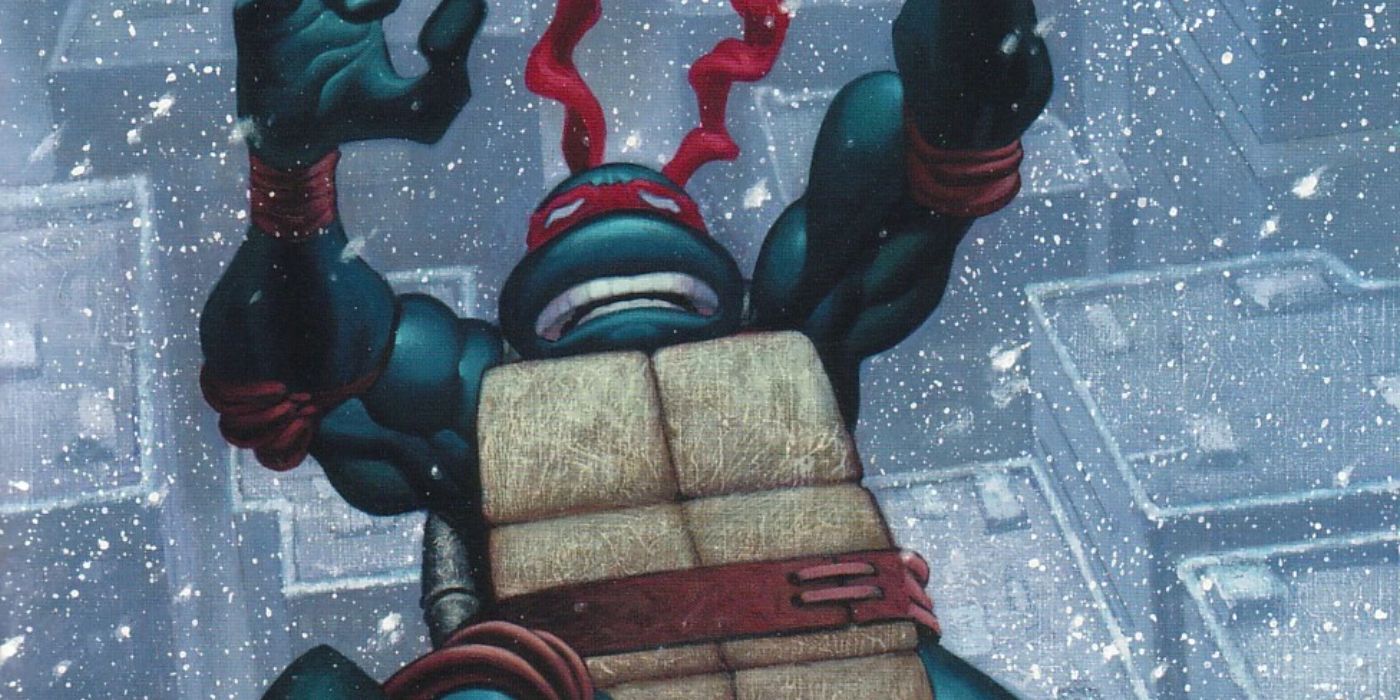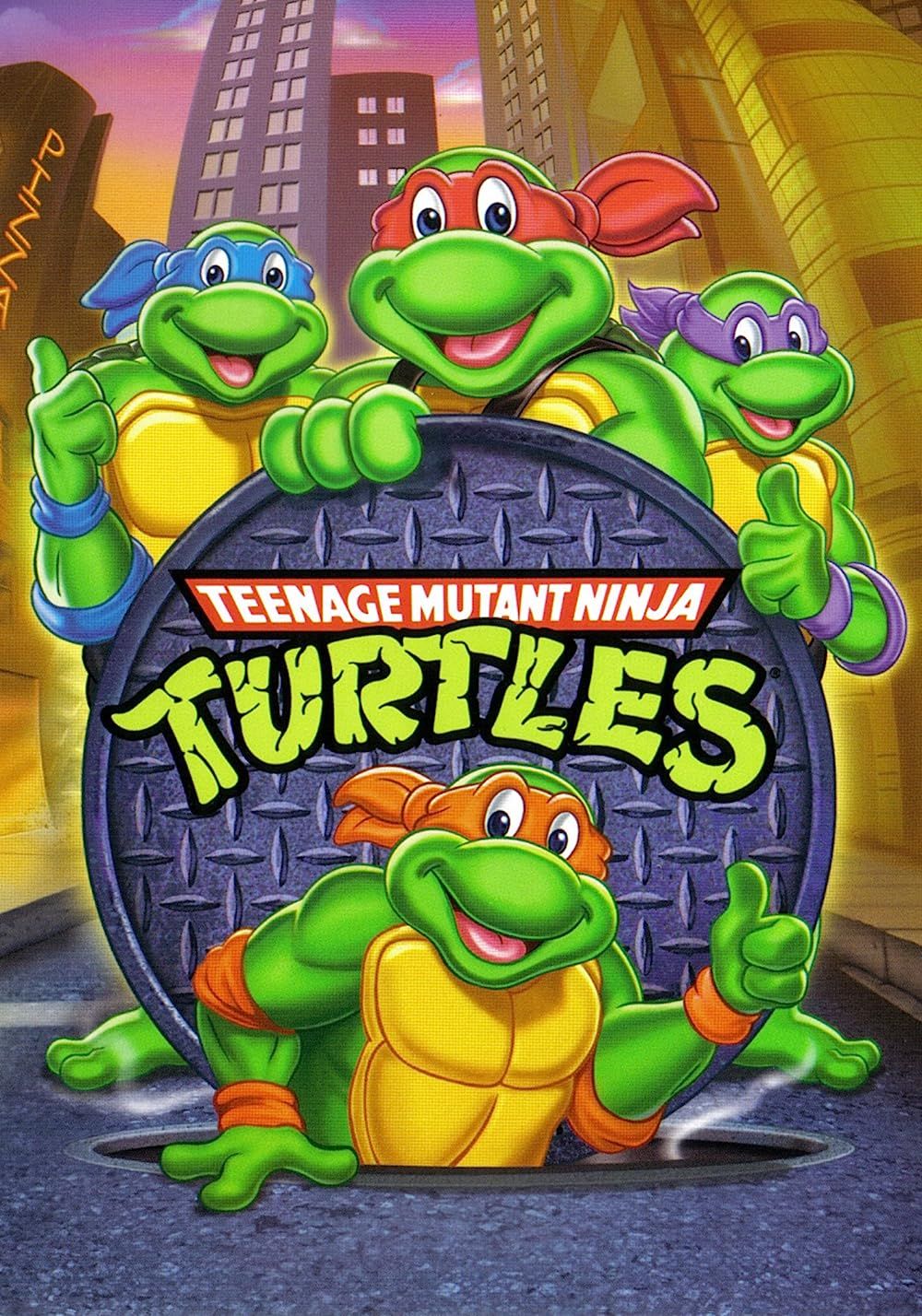Quick Links
The Teenage Mutant Ninja Turtles are some of the biggest characters in popular culture, and their 1980s cartoon was their launching pad into the proverbial mainstream. Before, they were known on Saturday mornings as heroes in a half-shell; however, they existed as far grittier characters in comic books. Published by Mirage Studios, this original take on the TMNT is far different from what fans might be used to.
Due to the franchise's evolution, the Mirage Ninja Turtles comics also had a somewhat haphazard release schedule and history. Thankfully, the majority of the run has become more readily available in recent years, helping to curtail the confusion. Likewise, one adaptation of the Teenage Mutant Ninja Turtles, in particular, helped to cement the Mirage version of the heroes as the foundation iteration.
Volume 1 of Mirage Studios' TMNT Started It All
|
Characters Introduced In TMNT Vol. 1 |
First Appearance |
|---|---|
|
Raphael |
Teenage Mutant Ninja Turtles #1 |
|
Leonardo |
Teenage Mutant Ninja Turtles #1 |
|
Donatello |
Teenage Mutant Ninja Turtles #1 |
|
Michelangelo |
Teenage Mutant Ninja Turtles #1 |
|
Splinter |
Teenage Mutant Ninja Turtles #1 |
|
Casey Jones |
Raphael: Teenage Mutant Ninja Turtles |
|
April O'Neil |
Teenage Mutant Ninja Turtles #2 |
|
The Shredder/Foot Clan |
Teenage Mutant Ninja Turtles #1 |
|
Utroms |
Teenage Mutant Ninja Turtles #3 |
|
Triceratons |
Gobbledygook #1 |
|
The Fugitoid |
Gobbledygook #1 |
|
Leatherhead |
Tales of the Teenage Mutant Ninja Turtles #6 |
|
Rat King |
Tales of the Teenage Mutant Ninja Turtles #4 |
|
Baxter Stockman/Mousers |
Teenage Mutant Ninja Turtles #2 |
|
Karai |
Teenage Mutant Ninja Turtles #53 |
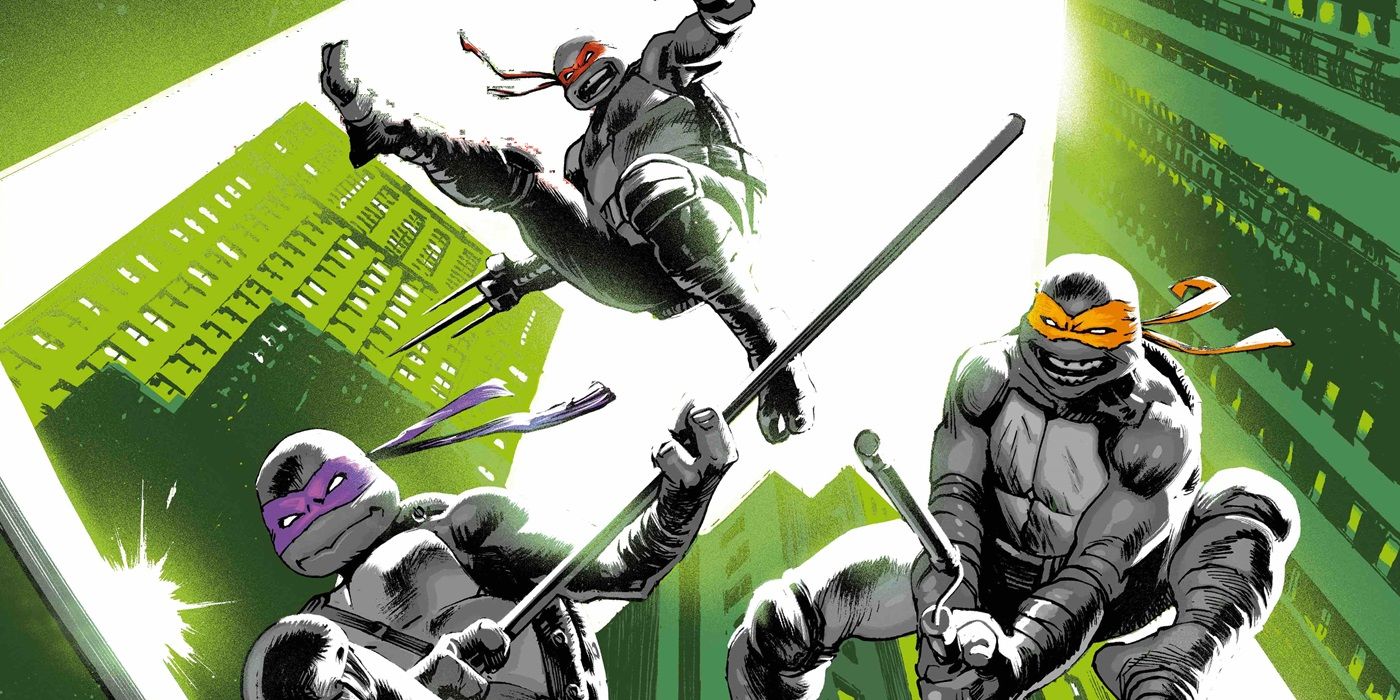
EXCLUSIVE: IDW Previews New Teenage Mutant Ninja Turtles Series
IDW exclusively reveals to CBR six of the covers for the first issue of TMNT #1, the start of Jason Aaron's run on the series
Teenage Mutant Ninja Turtles began in 1984 as an independent comic book by Kevin Eastman and Peter Laird, two friends who were very much inspired by the comic book trends of the era. They combined their love of iconic artist Jack Kirby and martial arts movies with the gritty direction the comic book industry was going in. One inspiration in particular was Marvel Comics' Daredevil series, namely the Frank Miller run on the horn-headed hero.
Miller turned what was a second-rate Spider-Man wannabe into a major Marvel hero by giving him a more grounded, darker noir tone. The Turtles' origin even reversed the one given to Daredevil himself. Also present in that series and Miller's Ronin was the concept of highly-trained and deadly ninjas. This further matched the Japanese-oriented cultural zeitgeist of the time, with Eastman and Laird using these disparate elements to create what could have been a low-effort parody - if it wasn't otherwise so good.
The two toyed with the idea of turtles, which are notoriously slow reptiles, performing fast-paced martial arts moves on their enemies. Thus was born the basis for the first volume of Teenage Mutant Ninja Turtles, which became their prevailing origin story for years to come—mutated by radioactive ooze, four turtles and a rat become intelligent humanoid animals in the sewers of 1980s New York City. The rat, going by the same Splinter, named the quartet after artists found in a book on the Renaissance (Michelangelo, Donatello, Leonardo and Raphael).
Training them in the deadly ways of ninjutsu, he prepared them for the day that they would avenge his human master, Hamato Yoshi, against the grievous Foot Clan ninjas and their leader, Oroku Saki, a.k.a. The Shredder. Strangely enough, the Turtles actually take Shredder out in their initial comic book issue, which wasn't meant to launch a multimedia empire.
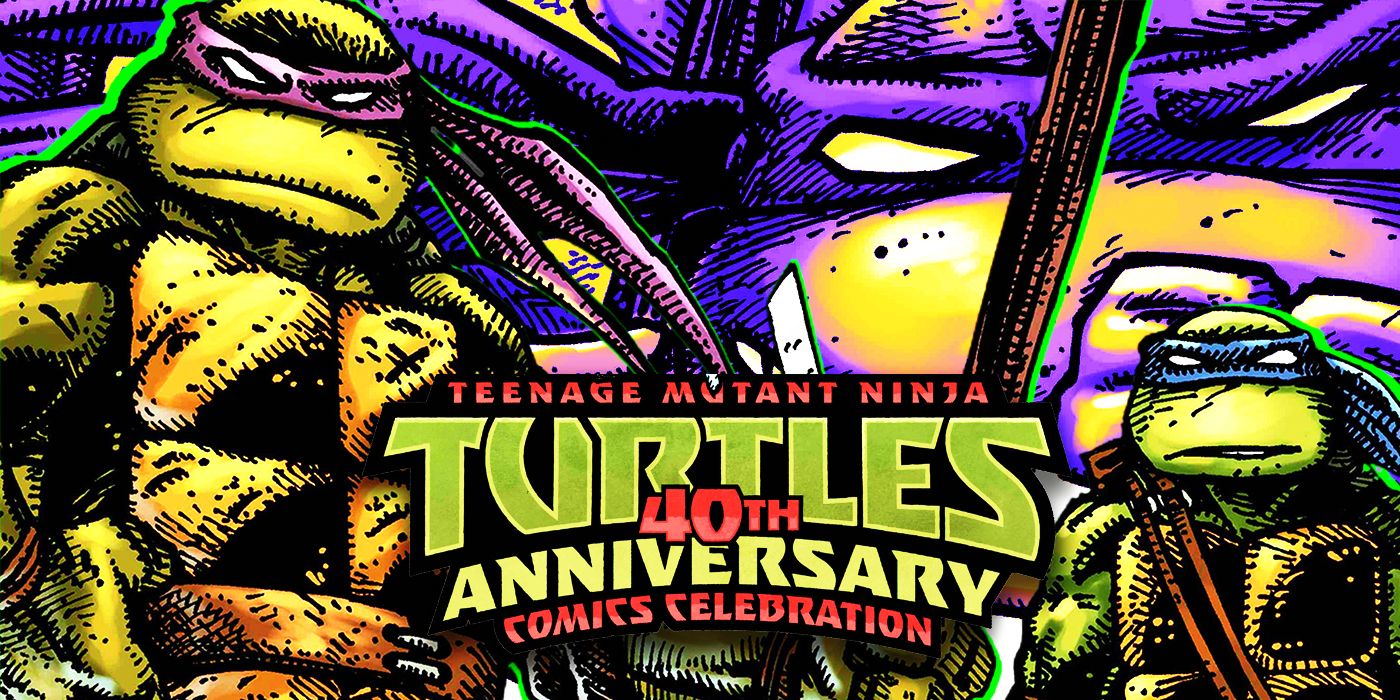
Teenage Mutant Ninja Turtles Creative Team on the Turtles' 40-Year Anniversary
In an interview with CBR, IDW Publishing's TMNT creative team discuss the franchise's 40-year anniversary and why the Ninja Turtle still matter today.
From there, other basic franchise elements were introduced, with some of these remaining staples to this day. The Turtles and Splinter's origins were revealed to be tied to the Utroms, brain-like aliens who had crashed on Earth long ago. Other extraterrestrial threats included the dinosaur-esque Triceratons encountered when the Turtles were tossed into outer space. They also met the Fugitoid, a genius professor who had transferred his consciousness into a robotic body, and the rat-eating Mousers created by Baxter Stockman. This initial volume concluded in 1993 with its 63rd issue and the "City at War" storyline, which featured the Turtles returning to a much more street-level scope and facing the Foot again.
- Splinter, The Foot and the four pet turtles' blind boy owner homage Stick, The Hand and the blind Matt Murdock from Marvel's Daredevil
- The TMNT originally all had red headbands, with the different color schemes introduced in the 1980s cartoon
- The Mirage Turtles appeared in different forms outside the comics, including the animated movie Turtles Forever
- The character Krang from the 1987 cartoon is not an Utrom, though he is visually inspired by them
- The Triceratons were an earlier creation of Eastman and Laird, actually predating the TMNT
Along with the main series, this era also saw the publication of Tales of the Teenage Mutant Ninja Turtles by Ryan Brown and Jim Lawson. This had an anthological tone, with stories beginning in media res. Supporting cast members such as Leatherhead were introduced in this run, and they later appeared in the main series and several of the adaptations. After the first several issues, the main book had much more of an experimental and inconsistent creative team.
The brand's sudden popularity meant that Eastman and Laird had to control it from a business standpoint instead of purely a creative one. The opening arcs of this first Mirage Studios volume heavily inspired both the 1990 live-action Teenage Mutant Ninja Turtles movie and the overarching story of the 2003 Teenage Mutant Ninja Turtles cartoon.
The Second Mirage Studios TMNT Volume Is Fairly Forgotten
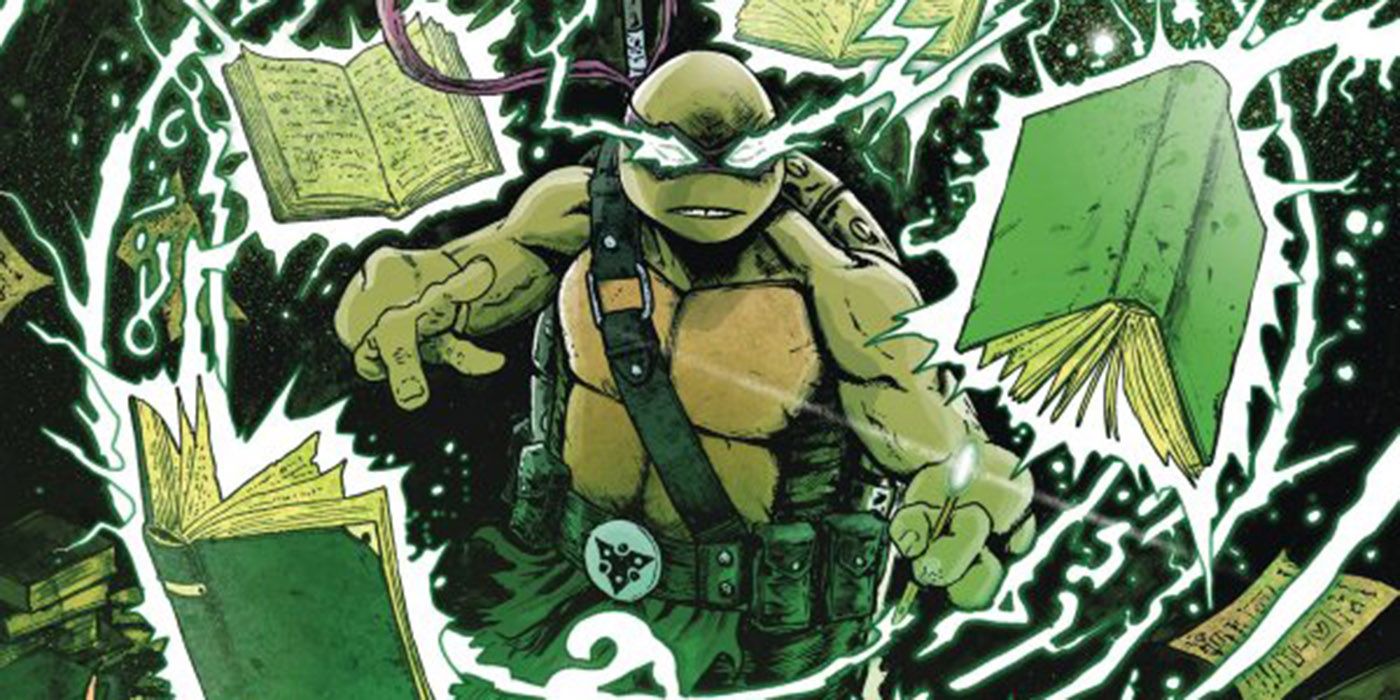
IDW Renews Teenage Mutant Ninja Turtles Licensing Agreement With Paramount
IDW Publishing renews its Teenage Mutant Ninja Turtles contract with Paramount and announces multiple new titles in honor of TMNT's 40th anniversary.
Beginning in 1993, the second volume of Mirage Studios' Teenage Mutant Ninja Turtles was a bit of a change of pace. It was written and drawn by Jim Lawson, who created the villainous Rat King and later co-created Planet Racers with Peter Laird. Released in color instead of a black-and-white series, its artistic evolution showcased the property's popularity. The storyline continued the continuity of the previous volume, with the Turtles now a bit older and fracturing amid their need to hide from society constantly. Things only worsen as Baxter Stockman returns, gaining more resources than ever.
- Besides the Mirage comics, there was also another Teenage Mutant Ninja Turtles comic at this time from Archie Comics
- The 1987 TMNT cartoon lasted for ten seasons, with the showing containing nearly 200 episodes
- Teenage Mutant Ninja Turtles remained the sole major hit at Mirage Studios
Though the second volume of TMNT by Mirage Studios was released amid a myriad of fan attention, it didn't last long. Sales and a flood at Mirage headquarters meant that the series ended after only 13 issues, which signaled the trouble the industry and the franchise were experiencing. The speculator boom that had initially driven the success of the Ninja Turtles comic and the 1990s rise of publishers such as Image had begun to come to a crashing halt. Likewise, even the successful Teenage Mutant Ninja Turtles cartoon that began in the 1980s was beginning to lose steam, with the brand about to become something of a slumber.
Mirage Studios' TMNT Volume 3 Isn't Canon
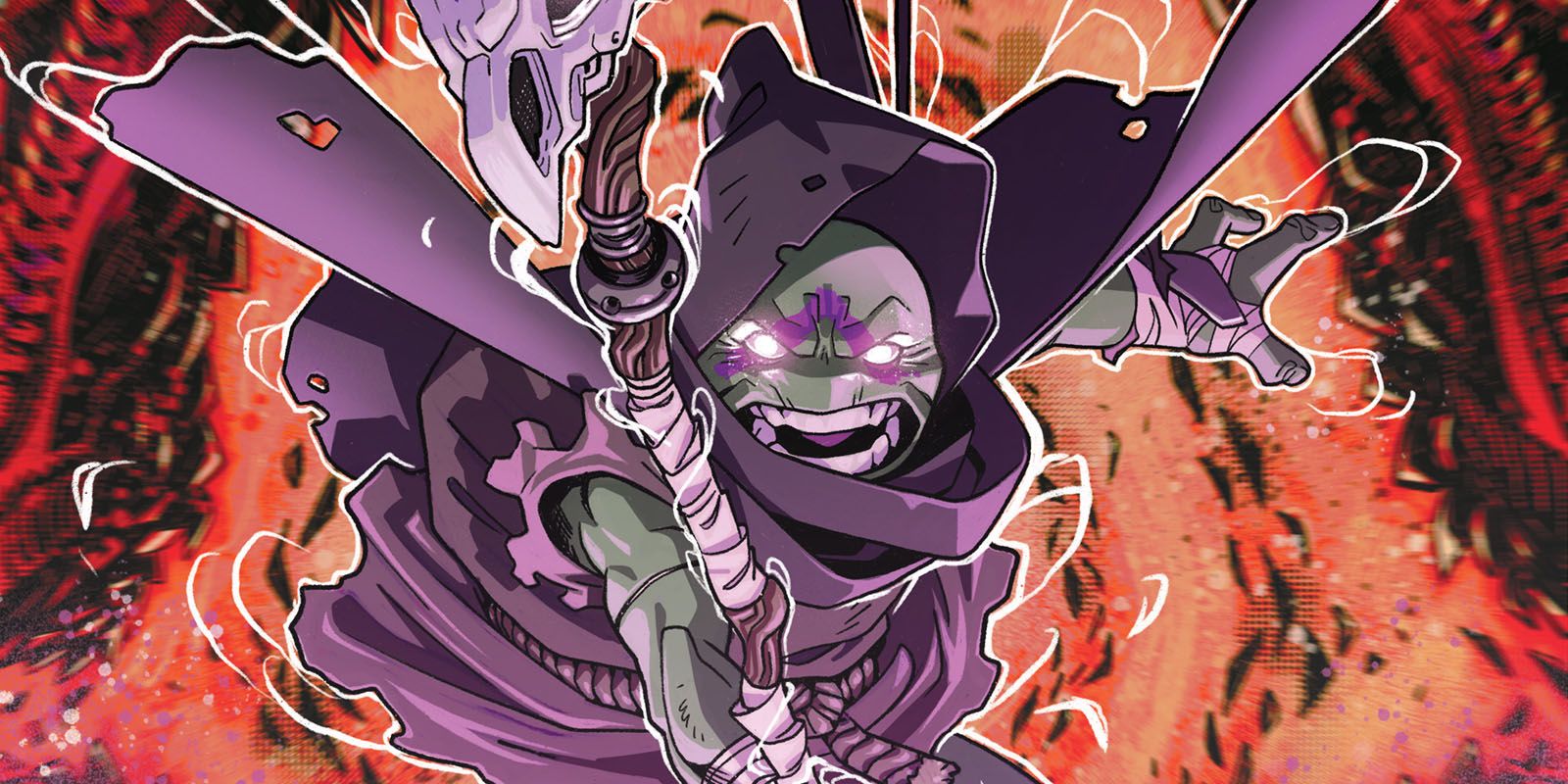
EXCLUSIVE: Teenage Mutant Ninja Turtles #150 and IDW Celebrate the End of an Era
Sophie Campbell's Teenage Mutant Ninja Turtles run may be ending, however, IDW Publishing says more TMNT comics are on the way.
A year after the previous volume concluded, the Mirage Studios Ninja Turtles comic continued at Image Comics. Handled by Gary Carlson and Frank Fosco, this series took the Turtles and their allies in much different directions from what had come before. The status quo was frequently subject to change to incredible degrees, including Splinter becoming a bat, the Turtles becoming physically disfigured in various ways, and even Raphael becoming the new Shredder. There was also the intent to include the series in the amorphous 1990s Image Comics superhero universe, with Erik Larsen's Savage Dragon appearing in the comic book.
- Image Comics' initial "shared" superhero universe included characters such as Spawn, Savage Dragon, Youngblood and the WildC.A.T.s
- Savage Dragon also teamed up with the Ninja Turtles in the pages of his own ongoing comic book
- The current IDW TMNT book is now set to relaunch after reaching 150 issues
This volume initially ended its publication with issue #23 and remained in a strange spot for several years. The Mirage Studios continuity no longer holds this volume as canon to the rest of the series because Laird wasn't involved creatively. In 2018, IDW Publishing (the current home of the TMNT comic book license) re-released this volume as TMNT: Urban Legends, with the original creative team also returning for a three-issue finale. Though the events of the series haven't been referenced in other works, there was a vague homage in an episode of the 2003 cartoon involving Raphael becoming The Shredder.
The Final Mirage Studios TMNT Volume Featured Much Older Turtles
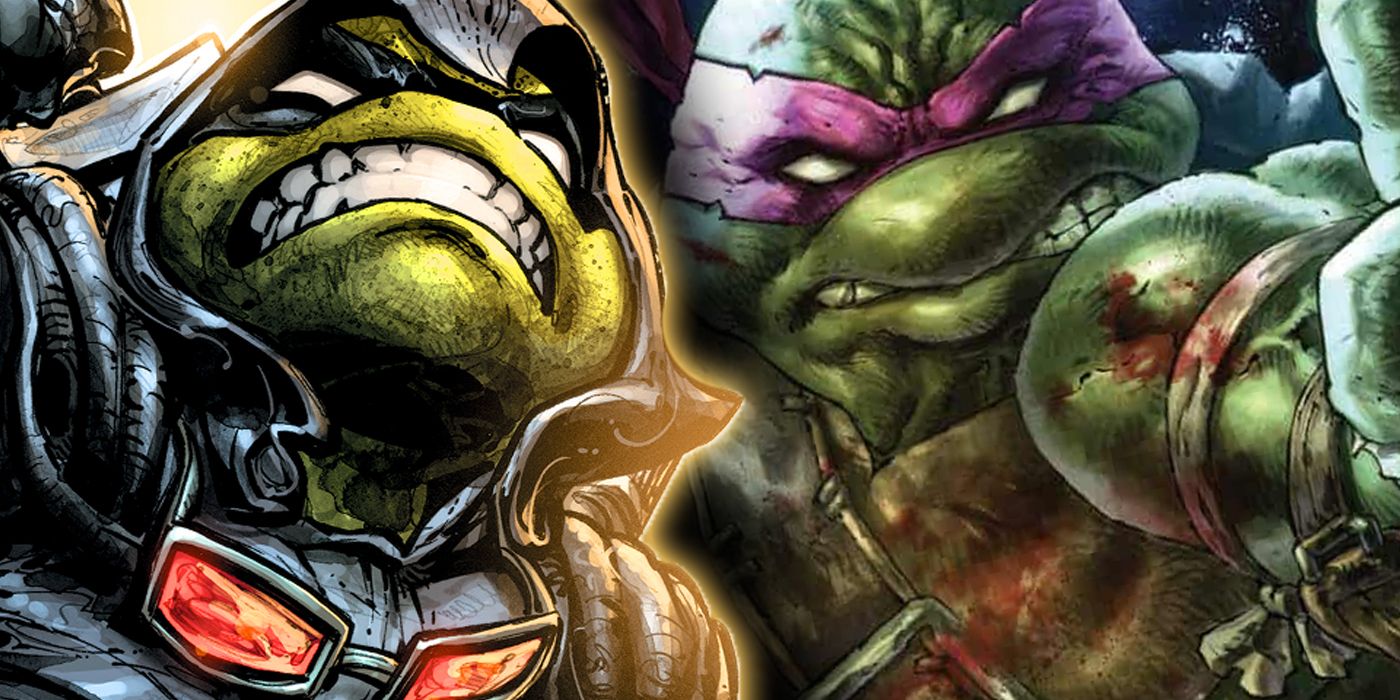
The Last Ronin: What Happened to Every Teenage Mutant Ninja Turtle
The Last Ronin is a glimpse at the darkest future the Teenage Mutant Ninja Turtles have ever known, but where exactly did each Turtle end up?
The fourth and final volume of Teenage Mutant Ninja Turtles from Mirage Studios was launched in 2001, and it was published sporadically until 2014 (by which point IDW Publishing's reboot of Teenage Mutant Ninja Turtles had already begun). This ignored the events of the third volume by Image Comics and instead focused on an older version of the turtles. Now in their 30s, the terrapins were no longer teenagers, so the series was simply titled TMNT. Another major change was that the Utroms had publicly announced their presence on Earth. This meant that the Turtles and some of their mutant allies were now allowed to operate openly, albeit under the ruse that they, too, were aliens.
Along with its main TMNT book, IDW has since released collections and compendiums of the classic series, with these titled Teenage Mutant Ninja Turtles Classics, Teenage Mutant Ninja Turtles Color Classics and Teenage Mutant Ninja Turtles Compendium. These mostly tackled the first volume, though some also contained the second. The Urban Legends series and its trade paperbacks collect the non-canon third volume, but volume 4 has yet to be touched by the publisher.
The dark future of TMNT: The Last Ronin is similar to this classic continuity, though it's set in a world of its own. While the continuity ended when the license switched publishers, fans can still get a unique take on the Turtles thanks to the Mirage Comics line.


